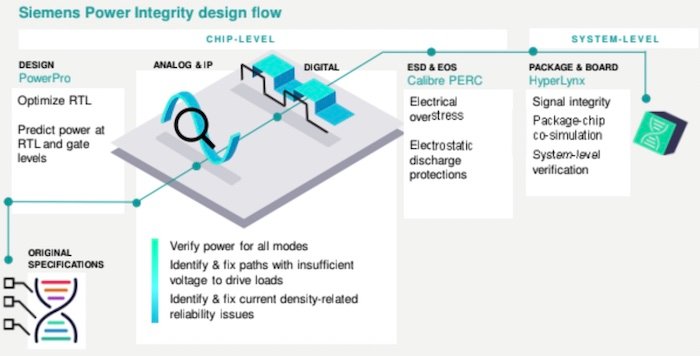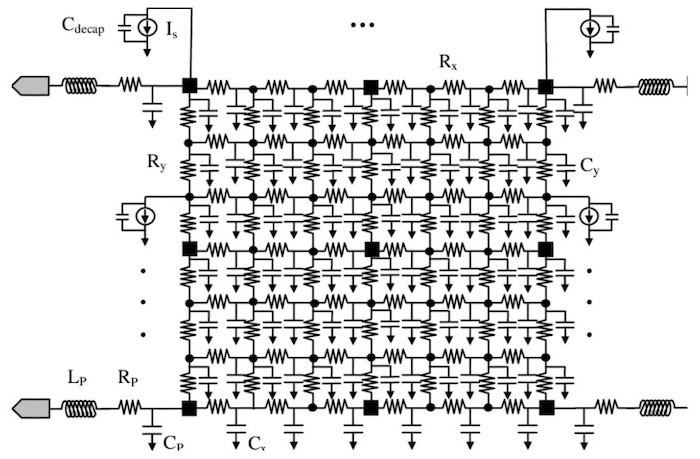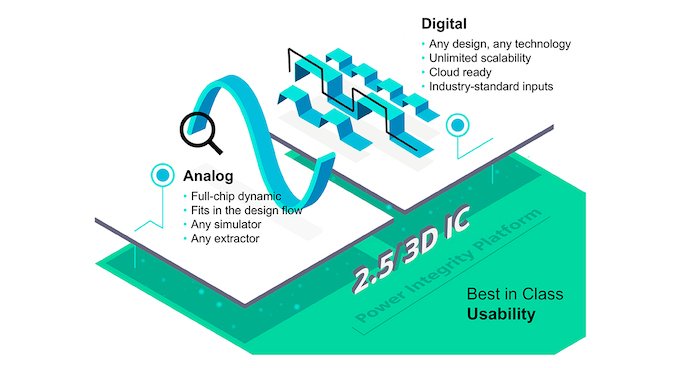As ICs scale down, designers are faced with an entirely new wave of issues that do not exist on larger nodes. One major consideration in today’s IC design is power integrity, which is becoming increasingly important in the face of new interconnect geometries.
Within this, two of the major contributors to power integrity issues are voltage drops (IR) and electromigration (EM).

Siemens' power integrity design flow. Image used courtesy of Siemens
To counteract these problems, Siemens has announced mPower, its newest software solution for power integrity verification. This article will take a look at the effects of IR and EM on power integrity and see how mPower hopes to alleviate these issues.
Electromigration and Power Integrity
Electromigration is defined as the movement of metallic atoms in an IC interconnect caused by electron flow at high current density.
Essentially, this is saying that when a lot of current passes through a small metal area, electrons can collide with the metal atoms. When this happens, momentum is transferred from the electron to the atom.
The result is that the metal atoms physically drift away from their original position and move in the direction of the current flow. Over time, this movement of atoms can create either a vacancy (called a void) or a deposit (called a hillock) of metal atoms, which can eventually cause open-circuits or short-circuits, respectively.

Hillock and void formation in an interconnect. Image used courtesy of Team VLSI
EM has become a power integrity issue as ICs have scaled because EM directly results from current density (current per area). As technology nodes shrink, so does the cross-sectional area of the metal interconnects used. At the same time, many ICs are becoming more and more powerful, requiring more current.
The result is significantly increased current density, which leads to EM-induced shorts/opens in the power delivery network, causing power integrity issues.
IR and Power Integrity
Another growing concern for IC power integrity is increased IR drops as technology scales.
As discussed before, IC scaling is causing interconnects to become smaller in terms of cross-sectional area. Since the parasitic resistance of interconnects is inversely proportional to its cross-sectional area, a result of this trend is that interconnects are becoming more resistive, while at the same time, ICs are demanding more current.

Model of a global power-delivery network. Image used courtesy of Ajami et al
The result of these two trends is that ICs are experiencing significant IR drops along their power delivery networks. These unwanted losses can lead to power integrity issues since the power delivered to the transistor itself will be less than what is outputted by the power source.
Aiming to help designers alleviate some of these issues and challenges, Siemens has created an industry-first solution.
Siemens mPower
To allow designers to simulate better and avoid power integrity issues related to both IR and EM, Siemens has released mPower to the industry.
The goal of mPower is to enable comprehensive power, EM, and IR analysis for today’s ICs.
With mPower, engineers could perform sign-off analysis of IR-drop, power, and EM with high accuracy so that the designs will perform as reliably when manufactured.

Features of mPower for analog and digital design. Image used courtesy of Siemens
Applicable to analog, digital, and mixed-signal ICs, mPower is said to have “virtually unlimited scalability” and can work for 2D and 2.5/3D IC implementations at any scale.
Siemens claims that customers using mPower have already seen runtime improvements allowing for up to twice as fast. One customer has even achieved first-pass EM/IR analysis of large analog IP blocks, which may have been previously impossible.
As the increased need for power integrity solutions continues to grow, Siemens’ mPower seems to have come to market at the right time. With the potential to allow engineers to account for IR/EM issues and speed up workflows, Siemens’ mPower seems like it could be an important and viable solution in today’s marketplace.
